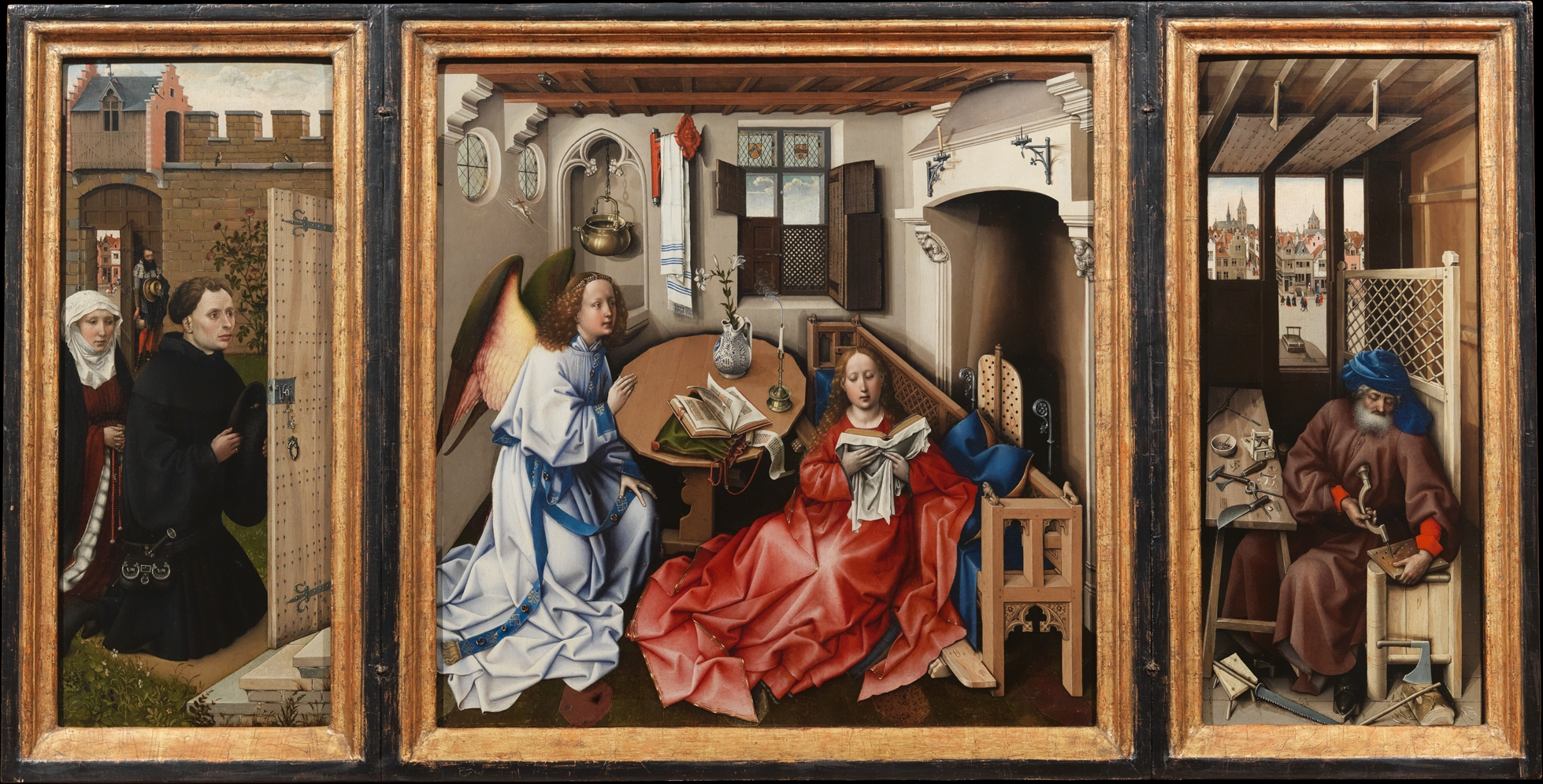Renaissance Review
Subject Matter
Annunciation: The announcement by the Angel Gabriel to the Virgin Mary that she would conceive the Son of God, Jesus
Visitation: The visit of Mary to her cousin Elizabeth, during which Elizabeth's unborn child, John the Baptist, leaped in her womb in recognition of the presence of Jesus.
Nativity: The birth of Jesus Christ in Bethlehem, celebrated as a pivotal event in Christianity, often depicted in art with Mary, Joseph, and the shepherds.
Last Supper: The final meal shared by Jesus and his apostles before his crucifixion, during which he instituted the Eucharist and foretold his betrayal.
The Passion: The suffering and crucifixion of Jesus Christ, a central theme in Christian theology, symbolizing redemption and sacrifice for humanity's sins.
Last Judgement: The final judgment of souls by Jesus Christ at the end of time, depicted in art as a moment of divine justice where the righteous are rewarded and the wicked are condemned.
Lamentation: A scene depicting the mourning of Christ after his crucifixion, often portrayed with the Virgin Mary and other figures expressing profound sorrow, highlighting the emotional impact of Christ's sacrifice.
Questions
Who made Très Riches Heures du Duc de Berry: Created by the Limbourg Brothers
What is Très Riches Heures: A richly illuminated manuscript that serves as a Book of Hours, showcasing the daily prayers and devotions of the owner, known for its exquisite miniatures and detailed depictions of seasonal activities.
How can you tell a painting is from the north?: Northern Beauties (Pale skin, belly pudge, wide forehead) disguised symbolizing, intricate drapery
What started the renaissance?: Door competition for the Florence Cathedral, prompted artists to be creative with their designs and techniques within architecture. Alberti is coined as the pioneer of the Renaissance period, he was mad about his loss to Ghiberti during the Florence Cathedral competition and innovated his art continuously which led innovations in Italy.
What do wealthy Florentine homes usually have?: Three stories with dressing of the stone
When an art piece has multiple scenes of a story on a single canvas: Continuous narrative
How to tell if an art piece is Italian?: Momento Mori and classical architecture inclusions
What family is famous for their use of terracotta?: Della-Robbia
Why did the Della-Robia family use terrecotta?: Cheaper and more accessible
How to recognize David and the Goliath Piece?: Sword and Goliath’s head
Who made the Birth of Venus?: Botticelli
What was Botticelli’s Birth of Venus known for?: Use of curvilinear lines and weightless forms
What perspective was popular?: Linear Perspective
Art Capitals of Renaissance?: Italy and Northern Europe (Belgium and Netherlands)
Art Works
Claus Sluter: Well of Moses

Moses, David, Jeremiah, Zechariah, Daniel, and Isaiah
Prophets holding scrolls
Life-sized
15 century Northern Europe
Limbourg Brothers: Les Tres Riches Heures de Duc de Berry
Characteristic activities of each month
15th century Northern Europe
Prayer book/manuscript
Colors & Ink on Vellum
Integration of secular and non-secular art
Limbourgs are from the Netherlands
Lunettes above each month showcasing the zodiac signs and chariot
Shows the Duke being cultured and his relationship with his people
February
1413-1416
frigid cold winter
peasants doing things
May
celebrating May Day
Men and Women dressed best and on horses
Northern Beauty presented in the middle (Possibly Joan II, pale skin, big forehead, pudge)
October
Cast shadows
naturalism
rendered carefully
focuses on daily peasantry
Robert Campin: Annunciation Triptych (The Merode Altarpiece)

small altarpiece for private patrons
husband and wife in gothic tracery, they are kneeling in prayer on the left
combining religious and secular ideals
disguised symbolism within piece, the household items represent religious things
Purity represented in the book, single candle, lily,